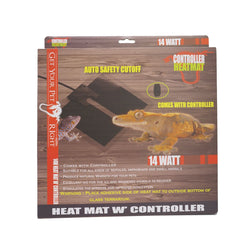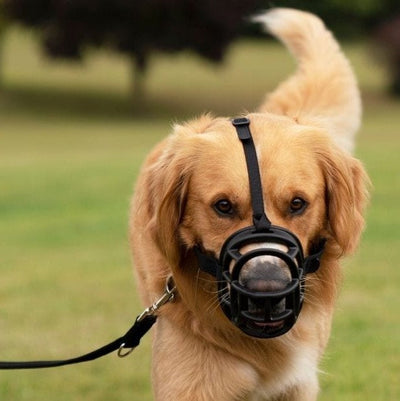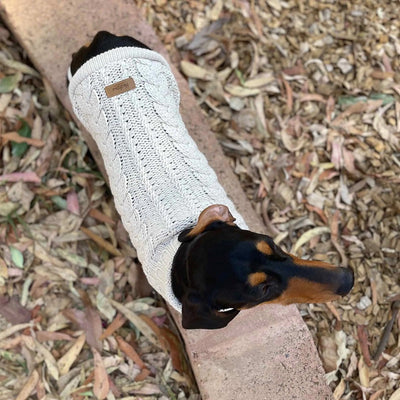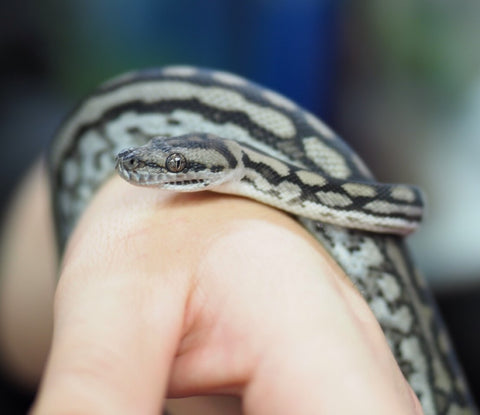 In this comprehensive guide, we will provide essential tips for python care, helping you become a confident and responsible caretaker.
In this comprehensive guide, we will provide essential tips for python care, helping you become a confident and responsible caretaker.
Keeping a python as a pet requires a deep understanding of their unique needs, environment, and dietary requirements. From creating the perfect habitat with the right temperature and humidity levels to providing a nutritious diet, we will cover all aspects of python care.
We will also cover the importance of regular veterinary check-ups, handling techniques, and the benefits of enrichment activities for your python's physical and mental well-being. Whether you are a first-time python owner or a seasoned reptile enthusiast, this guide is packed with valuable insights and practical advice that will help you keep your python happy and healthy for years to come.
Remember, in Australia all native reptiles are protected species. To own one as a pet you will need to have a reptile keepers licence.
Understanding the basics of Python care
 Python care begins with a solid understanding of these reptiles' natural habits and characteristics. Pythons are cold-blooded creatures that thrive in warm, tropical environments. They are known for their beautiful patterns and docile nature, which makes them popular pets for reptile enthusiasts. Understanding their basic needs is crucial for providing a suitable environment for them to thrive.
Python care begins with a solid understanding of these reptiles' natural habits and characteristics. Pythons are cold-blooded creatures that thrive in warm, tropical environments. They are known for their beautiful patterns and docile nature, which makes them popular pets for reptile enthusiasts. Understanding their basic needs is crucial for providing a suitable environment for them to thrive.
One of the first things to consider is the size and type of python species you have. Different species have different care requirements, so it's important to research and understand the specific needs of your python. Some pythons may grow larger than others, requiring a larger enclosure and a more spacious habitat.
Additionally, pythons are excellent climbers, so providing them with branches or other climbing structures in their habitat will help stimulate their natural behaviour. This will not only make your python happy but also ensure they get enough exercise to stay healthy and maintain muscle tone. It's important to strike a balance between a comfortable habitat and one that allows them to exhibit their natural behavior.
Another critical aspect of python care is understanding their feeding habits. Pythons are carnivorous and primarily feed on small mammals such as mice or rats. It's essential to provide them with a varied and nutritious diet to meet their nutritional needs. We will dive deeper into proper feeding and nutrition in the next section.
Given that pythons can have a lifespan of up to 50 years, understanding these basics of python care will lay the foundation for creating a suitable habitat and ensuring the well-being of your scaly friend.
Types of Python Species available for Sale at We Know Pets:
As a licenced reptil outlet, we provide a range of pythons for sale. It is always best to call us at the store - 48621175, to find out what we have available.
- Albino Darwin Carpet Pythons
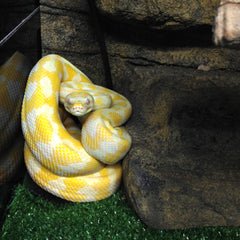
- Bredli Pythons
- Childrens Pythons
- Darwin x Jungle Pythons
- Honey Jungle Pythons
- Spotted Pythons
- Tully Jungle Pythons
Creating the ideal habitat for your Python
 Creating the perfect habitat for your python is crucial for their overall well-being. Pythons require a secure and spacious enclosure that mimics their natural environment. Here are some key factors to consider when setting up the ideal python enclosure.
Creating the perfect habitat for your python is crucial for their overall well-being. Pythons require a secure and spacious enclosure that mimics their natural environment. Here are some key factors to consider when setting up the ideal python enclosure.
1. Enclosure size and material
The size of your python's enclosure is vital to their comfort and happiness. Ideally, the enclosure should be at least as long as the python's length and wide enough for them to move around freely. It's important to remember that pythons can grow quite large, so it's better to opt for a larger enclosure from the start rather than having to upgrade later on.
The material of the enclosure is also important. Glass enclosures are commonly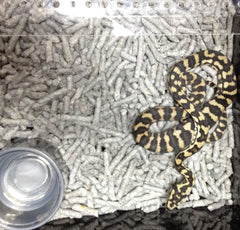 used as they provide good visibility and are easy to clean. However, ensure that the enclosure is secure and escape-proof, as pythons are known for their escape artist abilities.
used as they provide good visibility and are easy to clean. However, ensure that the enclosure is secure and escape-proof, as pythons are known for their escape artist abilities.
2. Temperature and humidity
Maintaining the correct temperature and humidity levels in the python's habitat is essential for their health and well-being. Pythons are cold-blooded, which means they rely on external sources, such as their environment, to regulate their body temperature.
A temperature gradient should be created within the enclosure, with a warmer end and a cooler end. This allows the python to move between different temperature zones according to their needs. The warm end should be around 31-33°C, while the cooler end should be around 22-28°C. Using thermostats and heat mats or lamps can help achieve and maintain the desired temperatures.
Humidity is equally important for pythons, as it helps with shedding and overall health. The humidity level should be around 50-60%, but this may vary depending on the python species. Providing a humidity hide or a water bowl can help maintain the required humidity levels.
3. Substrate and hiding spots
Choosing the right substrate for your python's enclosure is essential for their comfort and hygiene. There are various options available, such as aspen shavings, cypress mulch, or reptile carpet. Avoid substrates like sand or gravel, as they can cause impaction if ingested.
comfort and hygiene. There are various options available, such as aspen shavings, cypress mulch, or reptile carpet. Avoid substrates like sand or gravel, as they can cause impaction if ingested.
Pythons also require hiding spots to feel secure. These can be created using commercially available hides or by using natural materials such as branches, logs, or rocks. Hides should be placed at both the warm and cool ends of the enclosure to provide options for the python to regulate their body temperature.
By creating an ideal habitat for your python that includes the right enclosure size, suitable temperature and humidity levels, and appropriate substrate and hiding spots, you are setting the stage for a happy and healthy reptile companion.
Proper feeding and nutrition for your Python
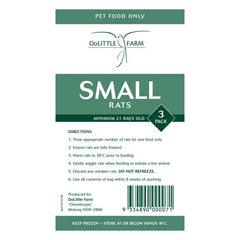 Proper feeding and nutrition are essential for the overall health and well-being of your python. Pythons are carnivorous reptiles and require a diet primarily consisting of small mammals, such as mice or rats. Here are some key points to consider when it comes to feeding and nutrition for your python.
Proper feeding and nutrition are essential for the overall health and well-being of your python. Pythons are carnivorous reptiles and require a diet primarily consisting of small mammals, such as mice or rats. Here are some key points to consider when it comes to feeding and nutrition for your python.
1. Prey size and frequency
The size of the prey you offer to your python should be appropriate for their size. Generally, the prey should be about the same width as the python's thickest part. Offering prey that is too large can lead to regurgitation or digestive issues, while prey that is too small may not provide adequate nutrition.
The frequency of feeding depends on the python's age and size. Younger pythons require more frequent feedings, typically every 5-7 days, while adult pythons can be fed every 10-14 days. It's important to observe your python's body condition and adjust the feeding schedule accordingly.
2. Variety in the diet
To ensure a balanced diet, it's crucial to provide variety in your python's diet. Feeding only one type of prey can lead to nutritional deficiencies over time. Ideally, you should offer a variety of prey, including mice, rats, and even small birds. This will help provide a range of nutrients and prevent your python from becoming selective in their diet.
3. Feeding methods
There are different feeding methods you can use when offering prey to your python. The most common method is direct feeding, where the prey is offered to the python using tongs or forceps. This allows for a more controlled feeding process and reduces the risk of your python accidentally biting you.
Another method is scenting, where the prey is rubbed with the scent of another animal to entice the python to eat. This method can be useful if your python is being hesitant or showing a lack of interest in their food.
being hesitant or showing a lack of interest in their food.
Proper feeding and nutrition are key to maintaining your python's health and ensuring they receive the necessary nutrients. By offering appropriately sized prey, providing dietary variety, and using suitable feeding methods, you are helping your python thrive.
Maintaining the correct temperature and humidity levels
Maintaining the correct temperature and humidity levels in your python's habitat is crucial for their overall health and well-being. Pythons are cold-blooded reptiles, meaning they rely on their environment to regulate their body temperature. Here are some essential tips to ensure your python's habitat provides the right conditions.
1. Temperature gradient
Creating a temperature gradient within your python's enclosure is important to allow them to regulate their body temperature effectively. This can be achieved by positioning the heat source, such as a heat mat or lamp, at one end of the enclosure. The warm end should have a temperature of around 31-33°C, while the cool end should be around 22-28°C.
By providing a temperature gradient, your python can move between different areas of the enclosure to find their preferred temperature. This allows them to thermoregulate and aids in digestion and overall metabolic function.
2. Heating methods
There are various heating methods you can use to maintain the desired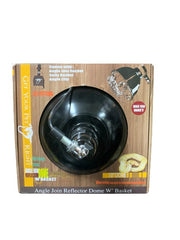 temperature in your python's habitat. Heat mats or heat tape placed under one side of the enclosure are commonly used. These provide a direct source of heat and help create the temperature gradient.
temperature in your python's habitat. Heat mats or heat tape placed under one side of the enclosure are commonly used. These provide a direct source of heat and help create the temperature gradient.
Ceramic heat emitters or heat lamps can also be used to provide heat from above. These are especially useful for larger enclosures, as they can heat a larger area. It's important to use thermostats with these heating methods to ensure the temperature remains within the desired range and doesn't become too hot or too cold.
3. Humidity levels
Humidity is equally important for the health of your python. The humidity level in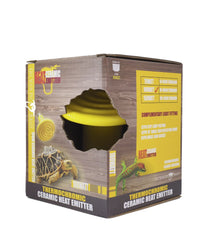 their habitat should be around 50-60%, but this may vary depending on the python species. Maintaining adequate humidity helps with shedding and overall respiratory health.
their habitat should be around 50-60%, but this may vary depending on the python species. Maintaining adequate humidity helps with shedding and overall respiratory health.
To increase humidity levels, you can provide a large water bowl or use a reptile fogger or humidifier. These devices help add moisture to the air and maintain the required humidity levels. Regular monitoring of the humidity levels using a hygrometer is essential to ensure they are within the appropriate range.
By maintaining the correct temperature and humidity levels in your python's habitat, you are providing them with the optimal conditions for their health and well-being. Creating a temperature gradient, using suitable heating methods, and monitoring humidity levels are key aspects of python care.
Handling your Python
Handling your python is not only a great way to bond with your scaly friend but also helps them become comfortable with human interaction. Regular handling from a young age can make your python more tolerant and less stressed when being handled. Here are some essential tips for handling your python.
1. Start with short handling sessions
When first introducing handling, it's important to start with short sessions and gradually increase the duration as your python becomes more comfortable. Begin by placing your hand near the python's enclosure and allowing them to get used to your presence. Slowly and gently stroke their body to build trust and familiarity.
Always approach your python from the side and avoid sudden movements that may startle them. It's also important to handle your python with clean hands to prevent the transfer of any harmful substances or bacteria.
2. Support their body properly
When handling your python, it's crucial to support their body properly to avoid any injuries or stress. Use both hands to support their weight, with one hand supporting the front half of their body and the other supporting the back half. This provides stability and prevents them from feeling unsupported or unsafe.
Avoid excessive squeezing or putting pressure on their body, as this can be uncomfortable for them. Remember, pythons are strong and can be quite heavy, so always ensure you have a secure grip and are able to handle their weight comfortably.
3. Be mindful of their behaviour
While handling your python, it's important to be mindful of their behaviour and body language. Signs of stress or discomfort may include hissing, aggressive posturing, or trying to escape. If you notice any signs of stress, it's best to gently place your python back in their enclosure and try again later.
Not all pythons enjoy handling to the same extent, and it's important to respect their individual preferences. Some pythons may be more docile and enjoy being handled, while others may be more shy or defensive. Always observe your python's behavior and adjust your handling techniques accordingly.
Regular handling of your python can help build trust and strengthen your bond. It's important to approach handling with patience and respect for your python's comfort levels to ensure a positive experience for both of you.
Common health issues in Pythons and how to prevent them
 Ensuring the health and well-being of your python is of utmost importance. While pythons are generally hardy reptiles, they can still be susceptible to certain health issues. Being aware of these common health issues and taking preventive measures can help keep your python in optimal condition. Here are some of the most common health issues in pythons and how to prevent them.
Ensuring the health and well-being of your python is of utmost importance. While pythons are generally hardy reptiles, they can still be susceptible to certain health issues. Being aware of these common health issues and taking preventive measures can help keep your python in optimal condition. Here are some of the most common health issues in pythons and how to prevent them.
1. Respiratory infections
Respiratory infections are a common health issue in pythons and can be caused by poor husbandry, such as inadequate temperature or humidity levels. Symptoms may include wheezing, open-mouth breathing, or excessive mucus production.
To prevent respiratory infections, it's crucial to maintain the correct temperature and humidity levels in your python's habitat. Regularly monitor these levels using a thermometer and hygrometer. If you suspect a respiratory infection, it's important to consult a reptile veterinarian for proper diagnosis and treatment.
2. Parasites
Pythons can be susceptible to internal and external parasites, such as mites or ticks. Regularly inspecting your python's skin and scales for any signs of parasites is important. Look for tiny black or red dots moving on their skin or any abnormal behaviour, such as excessive scratching or rubbing against objects.
To prevent parasites, it's important to maintain a clean and hygienic habitat. Regularly clean and disinfect the enclosure, including the substrate and any accessories. Quarantining new reptiles before introducing them to your python's habitat can also help prevent the introduction of parasites.
3. Obesity
Obesity is a common issue in captive pythons and can lead to various health problems, such as heart disease and reduced lifespan. Overfeeding or providing prey that is too large can contribute to obesity in pythons.
To prevent obesity, it's important to feed your python appropriately sized prey and maintain a feeding schedule based on their age and size. Regularly assess your python's body condition and adjust the feeding schedule accordingly. Providing opportunities for exercise and enrichment activities can also help prevent obesity.
4. Dysecdysis: A condition experienced by snakes more than other reptiles. It refers to the abnormality of shedding. Low humidity can be responsible for this in pythons. Ensure you have a hygrometer on your pythons enclosure, this will measure the humidity and temperature in the enclosure.
refers to the abnormality of shedding. Low humidity can be responsible for this in pythons. Ensure you have a hygrometer on your pythons enclosure, this will measure the humidity and temperature in the enclosure.
Regular veterinary check-ups are essential to catch any potential health issues early on. A qualified reptile veterinarian can perform a thorough examination, provide necessary vaccinations or parasite treatments, and offer guidance on proper python care.
By being proactive in preventive measures and seeking veterinary care when needed, you can help ensure your python leads a healthy and happy life.
© weknowpets 2024


